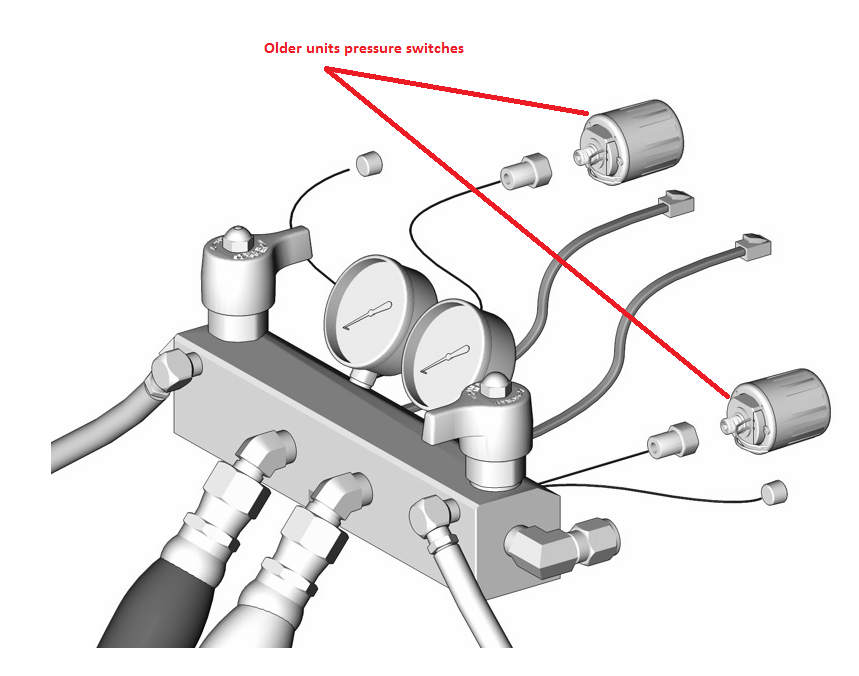E23 : High Pressure

To avoid serious injury follow all warnings and instructions in the manual. Wear appropriate personal protective equipment.
- On the current units without the over pressure switches Check the jumpers and the wiring.

- Check to see if one of the pressure switches failed.
- Remove the plug J10 (E20/E-XP1) or plug J7 (E30/E-XP2).
- Measure the resistance between pins 7 and 8, and between 9 and 10. Measurement should be @ 1 ohm.
- If the resistance in steps 2 & 3 is not @ 1 ohm, jumper pins 7 to 10. order repair kit 246961.
- If the error persists after connecting pin 7 to pin 10 with jumper, replace the motor control board, along with kit 246961

- Clean the plug and socket of transducer connection by unplugging and spraying commercially available contact cleaner and reconnecting.
- If the wire jumper and the wiring are in good working condition and you still have the error, then you will need to check the “A” & “B” pressure transducers. (See transducer check procedure under E24 section.)
- To determine if it’s the “A” or the “B” transducer, you may need a known good Reactor pressure transducer 24K999 to use as a “test” transducer. The test is going to be done without removing the existing pressure transducers from the fluid manifold.
- Unplug the “A” transducer from the Motor control board socket J3, (E-20/E-XP1) or J5, (E-30/E-XP2) and plug in the “Test” pressure transducer in its place.
- Turn on the Reactor main disconnect and see if the error has went away.
- If the error goes away turn off the Reactor main power and remove & replace the “A” pressure transducer.
- If the error didn’t go away, unplug the “test” transducer from the “A” socket, and reinstall the “A” pressure transducer back into the “A” socket, and repeat this test procedure on the “B” side J8, (E-20/E-XP1) or J3, (E-30/E-XP2).
! If the error persists and no root cause is found through the above testing, replace the motor control board.
- Not in all cases will an E31 error code appear. Another symptom of a motor drive failure is that the motor will immediately turn on when input power is applied to the Reactor, running away with no motor control. This is due to the control being shorted sending full vdc to the motor. If the motor runs as soon as power is applied to the machine, replace the motor control board after verifying input voltage
- Verify feed supply pumps or ball valves are not off.
- That the material drums are not empty.
- That the filter strainers are not restricted.
- That the Reactor pumps are working properly.
(See “If the gauges are not reading equal” section under E24)
- Heater modules failed to turn off any heat zone, causing a run-a-way condition. See section under E01.
- Jumper terminal 7 to 10 with kit 246961
